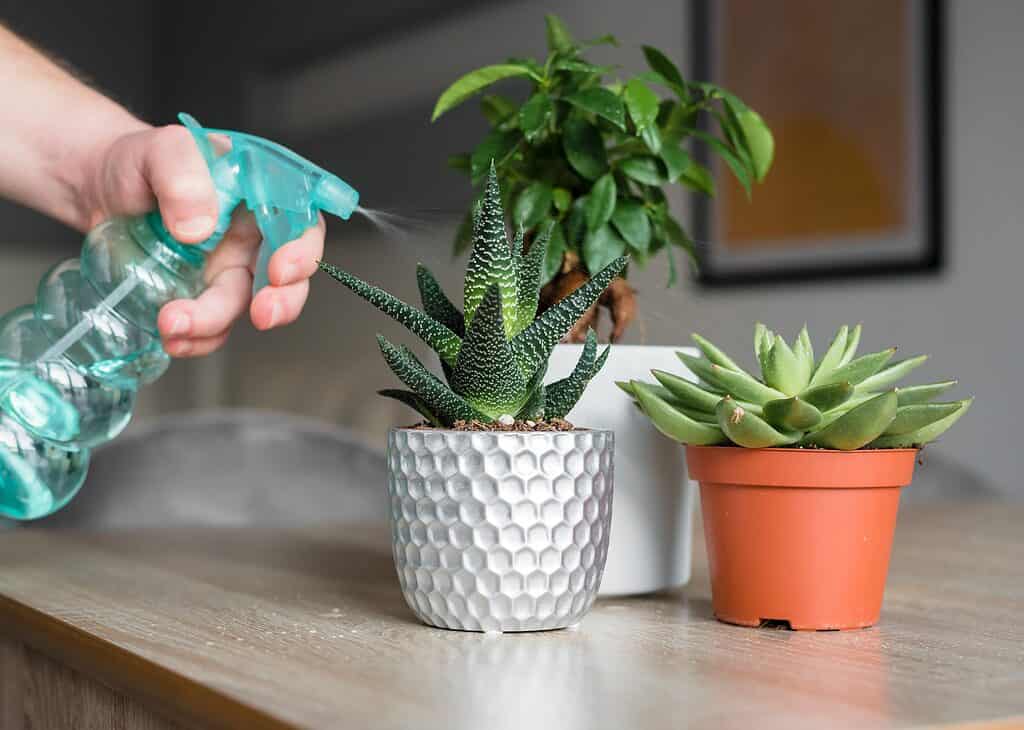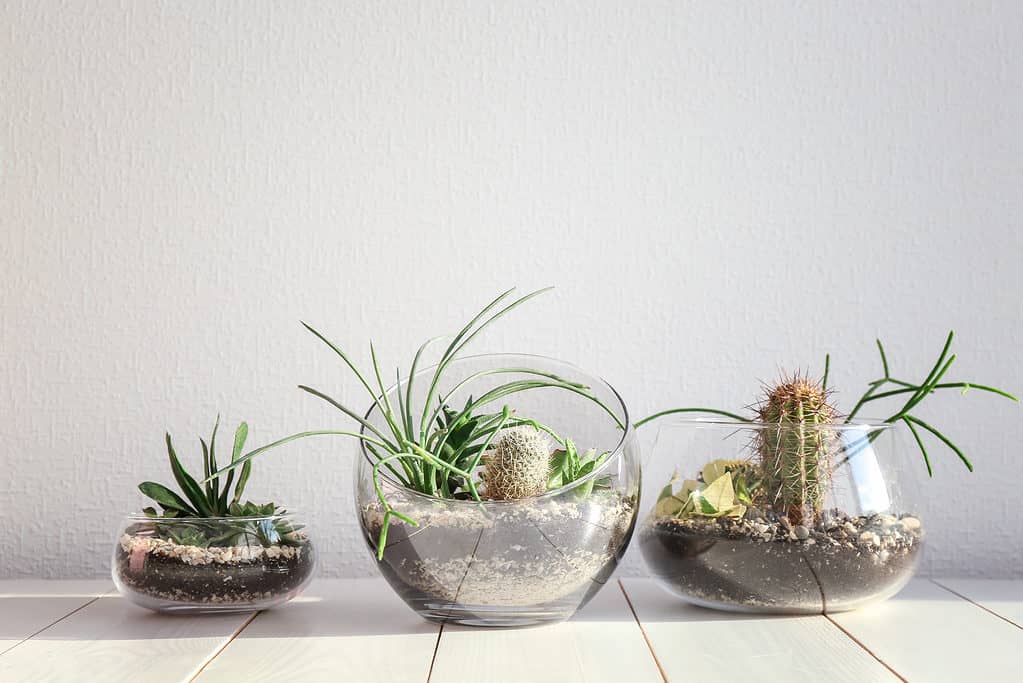There’s nothing like the realization you’ve made it through the winter with your plants intact. Now it’s time to set your beloved succulents up for success during their growing season. Keep reading to learn everything about succulent care in spring.
Spring is a time for growth. Here are some of the best practices for succulent care during the spring.
Increase Watering Frequency
Most succulents are dormant during the winter and require less water to survive. Overwatering can lead to root rot, which could kill your succulents. Savvy succulent owners typically reduce the watering frequency to avoid this issue.
You should reintroduce more water to your succulents as the days get longer. If you’ve been following the recommended 21-day watering schedule, gradually reduce the days until you’re back to weekly or biweekly watering.
As every succulent and environment are different, it’s best to check the soil and ensure it dries completely before rehydrating your plants. Monitor the leaves for signs of overwatering, like discoloration and texture changes.

Check the soil and ensure it dries completely before rehydrating your plants.
©Ilina Yuliia/Shutterstock.com
Succulent Care in Spring: Wipe Down and Remove Pests
The spring is the ideal time to give your succulents a once over and check for signs of pests. Some common pests to watch for include:
- Mealybugs – these fuzzy-looking bugs tend to cluster along the stem and steal nutrients from your succulent. Wipe them off with a damp cloth or use a cotton ball dipped in rubbing alcohol for extensive infestations.
- Spider mites – while these are difficult to spot, you’ll notice white dots or webbing on your succulent. Remove with a forceful spray of water or succulent-friendly pesticides.
- Scale insects – these hardshell bugs are active during the dormant season. Wipe down the leaves with rubbing alcohol or use a succulent-friendly pesticide treatment.
You can take a close look underneath the leaves and around the base of your succulent as you repot them.

Succulent terrariums (pictured) are easy to maintain, and you can design one to suit your aesthetic.
©Africa Studio/Shutterstock.com
Succulent Care in Spring: Start the Repotting Process
It’s best to avoid repotting during the dormancy period, as your succulents have minimal resources to prevent shock and establish roots in the new environment.
The spring is the optimal time, as your succulents are scaling up their photosynthesis and preparing for growth. Transplanting them now ensures they have the space and soil nutrients they need to grow.
Note that repotting isn’t necessary every spring. If you have a slow-growing succulent or a breed with a tight rootball that thrives in a compact pot (like a string of pearls), avoid annual repottings.
However, succulents should be repotted at least bi-annually to replenish soil nutrients. Don’t hesitate to use the same pot for slow growers.
Another consideration is that some succulents become dormant in the spring and should be repotted in the fall. These breeds include aeoniums, sansevieria, and some sedum varieties.

Spring is the optimal time for repotting.
©Gheorghe Mindru/Shutterstock.com
Provide Fertilizer or Plant Food
Whether repotting your succulents or leaving them for another year, you should introduce fertilizers or plant food in the spring.
Succulents need a fertilizer with a higher ratio of phosphorus to nitrogen than other indoor plants. This helps prepare the succulent for the growth period.
Succulents benefit from monthly fertilization during the summer months, but it’s recommended to research the specific type of plant first. Many succulents do better with longer periods between feedings as they slowly process the nutrients.
Take this opportunity to cut away any dead root tissue to prevent bacteria growth and redirect nutrients where needed.
Succulent Care in Spring: Propagate as Desired
The spring is also ideal for propagating your plants. As with repotting, most succulents can’t handle the shock of propagation during the winter. This applies to stem cuttings, leaf cuttings, and pup propagates, as they won’t have the energy or nutrients to establish roots.
During the spring, your succulents prepare for growth and increase nutrient absorption. Propagating your succulents now improves the chances of success.
Take this opportunity to prune away any dead leaf tissue to redirect nutrients to the stem and roots.

The spring is ideal for propagating succulents; avoid doing so in the winter, when it may shock the plant.
©TY Lim/Shutterstock.com
Reintroduce Sunlight
Succulents need ample sunlight to photosynthesize and grow. Fortunately, the lengthening days during the spring help gradually increase exposure to sunlight.
However, if you’ve moved your succulents away from drafty windows during the winter, carefully reintroduce them to their previous home.
Start by moving your succulents closer to the window and placing them on a table or cart so they get indirect sunlight. Alternatively, you can place them on the windowsill for a few hours each day, removing them during peak hours. Increase the exposure slowly over a few weeks.
It’s also important to be cautious when moving your succulents outdoors. Use a few hours a day, placing them in indirect sunlight and ensuring they’re protected during the midday hours when the sun is at its peak.
The photo featured at the top of this post is © iStock.com/simonapilolla
Thank you for reading! Have some feedback for us? Contact the AZ Animals editorial team.






